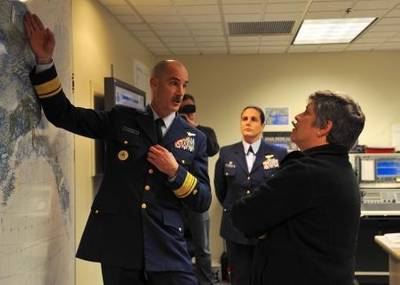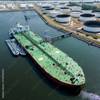Coast Guard Initiates Arctic Shield 2013
The Coast Guard 17th District announced its Arctic Shield 2013 plans to protect the maritime community in the Arctic and to strengthen their partnerships with federal, state, local, tribal and community members Wednesday.
“We are committed to having a sustained presence in the region,” said Rear Adm. Thomas Ostebo, commander, Coast Guard 17th District. “As the nation’s lead federal agency for ensuring maritime safety and security in the Arctic, we will protect our nation’s interests, safeguard the environment and strengthen our partnerships.”
After a successful Arctic Shield 2012 operation on the North Slope and Barrow, this year, the Coast Guard will focus on Western Alaska and the Bering Strait to increase maritime domain awareness.
“The Coast Guard will have several surface assets in the region including both of its ice breakers,” Ostebo said. “The Coast Guard Cutter Healy will conduct its science missions and will partner with the Coast Guard Research and Development Center to evaluate equipment, and the Coast Guard Cutter Polar Star will test the overall readiness of the icebreaker and crew.”
A National Security Cutter will also be deployed as a command and control platform that will conduct various missions to include maritime domain awareness, search and rescue, and law enforcement. “The National Security Cutter is highly efficient, can be underway for longer periods of time, and is uniquely equipped to respond to threats and events in times of crisis,” said Capt. Greg Sanial, chief of response, Coast Guard 17th District.
Another essential element to operations is the forward operating location that will be based at the Alaska National Guard hangar in Kotzebue. “In 2012, there were an estimated 480 transits through the Bering Strait,” Sanial said. “Deploying our helicopter and personnel to Kotzebue will give us an opportunity to leverage existing infrastructure and will strategically position us to conduct standard operations and effectively respond to maritime emergencies.”
"We have facilities in locations around the state to meet local, state, and federal needs in the event of emergencies or urgent contingencies,” said Major Gen. Thomas H. Katkus, adjutant general of the Alaska National Guard and commissioner of the State of Alaska Department of Military & Veterans Affairs. “The Alaska National Guard's hangar in Kotzebue is a great facility that is positioned to benefit multiple users. Tremendous synergy is achieved in sharing this space with the Coast Guard. Our relationship greatly benefits the state while simultaneously providing services and safety assets that better protect and help Alaskans."
Outreach is a key component to all Coast Guard operations and engagements in Alaska. Coast Guard members including Ostebo and senior Coast Guard officials have participated in numerous discussions this year with partners to discuss the changing Arctic environment.
“We understand the importance of strong relationships with tribal and local governments and have directly engaged in more than 50 meetings to discuss subsistence, shipping, and other Arctic concerns,” Ostebo said. “We are striving to build and strengthen our relationships throughout the Arctic by participating in open dialogue, actively listening, and responding to tribal and local government concerns.”
Personnel also visited schools in Point Hope and Wainwright in February to teach children about water safety and the importance of life jackets. Keeping mariners safe on the water is also part of the protection and prevention outreach efforts. Commercial fishing vessel and boating safety exams will be conducted in the Bering Strait region to reinforce the importance of good safety practices.
To help develop and integrate the Coast Guard into existing Arctic international, federal and state policy forums, the Coast Guard hired a full-time Arctic planner to ensure Coast Guard activities are aligned more efficiently to address interests in the region.
“Our participation provides a foundation and continuity to the Coast Guard and our Arctic partners as we collectively determine a whole of systems approach to managing the challenges of increased human activity in the region,” Ostebo said. “The themes include environmental stewardship, responsible economic development, and respect for subsistence and cultural legacies.”
Operating in the Arctic will give the Coast Guard an opportunity to exercise its capabilities to ensure the organization has the right resources to conduct Arctic operations. “This year we’re going to deploy a patrol boat to test its operational capability in a new and challenging environment,” Sanial said. “Our goal is to find the right mix of resources with the right capabilities to effectively operate in an area with limited infrastructure and extreme weather challenges.”
In addition to the cutters, aircraft and personnel conducting operations and outreach, the Coast Guard will also test other capabilities. A Coast Guard buoy tender and the Canadian coast guard will test a state of Alaska emergency towing system and a vessel of opportunity skimming system to reinforce crew familiarization with the equipment and build upon the Coast Guard’s international partnership with Canada. A spill of national significance (SONS) seminar and a mass rescue workshop are also planned to identify potential opportunities for improvement in preparedness and response to a maritime emergency.
“Leveraging our partnerships will continue to be a priority for the Coast Guard as we all collectively work to protect mariners, the environment and our nation’s interests,” Ostebo said.














